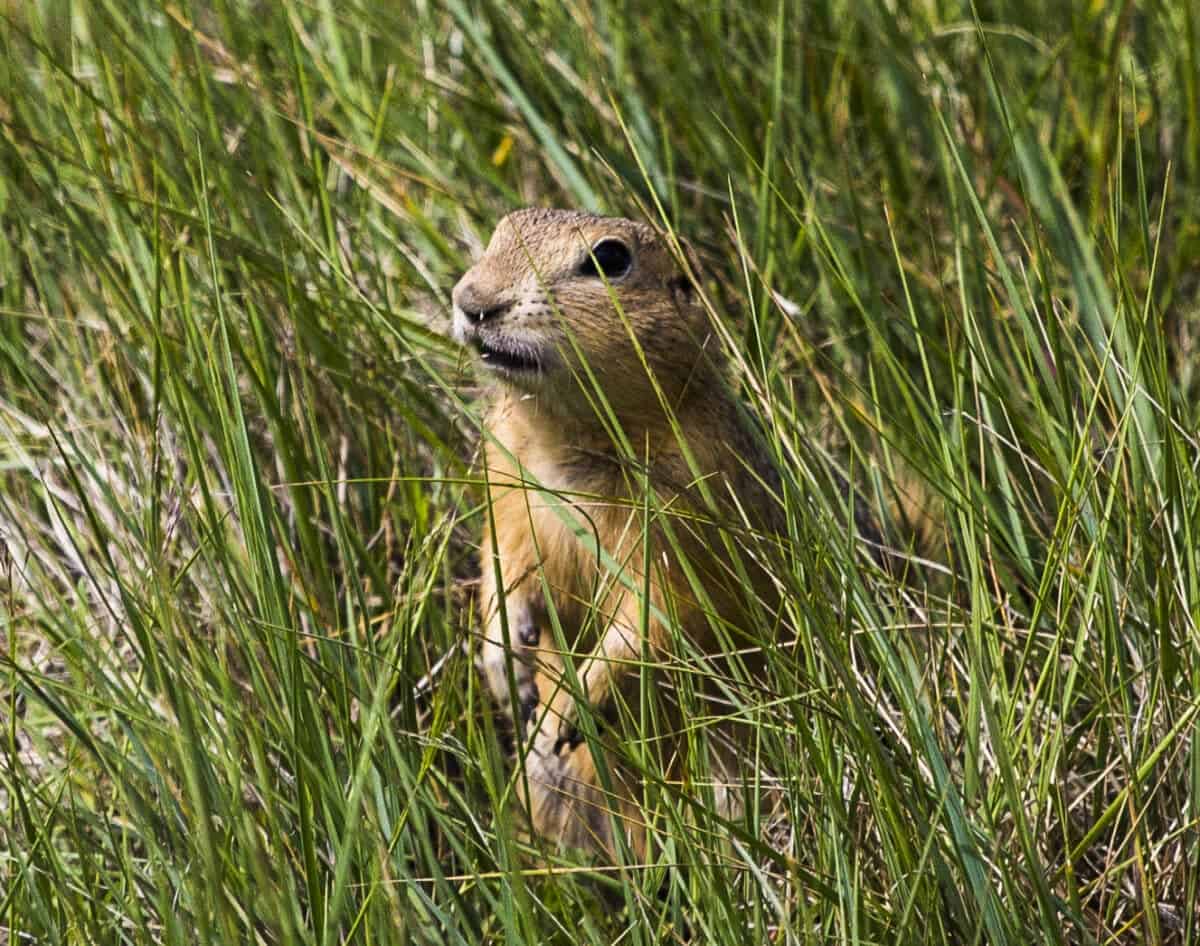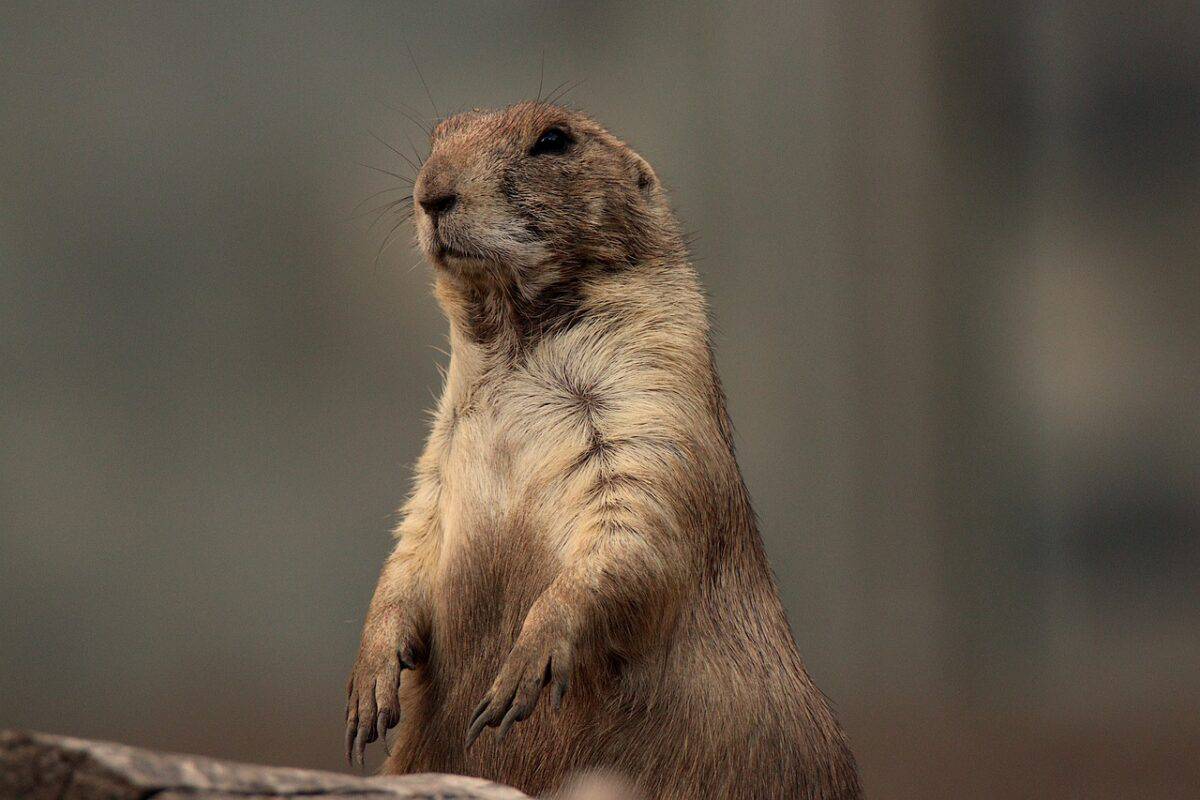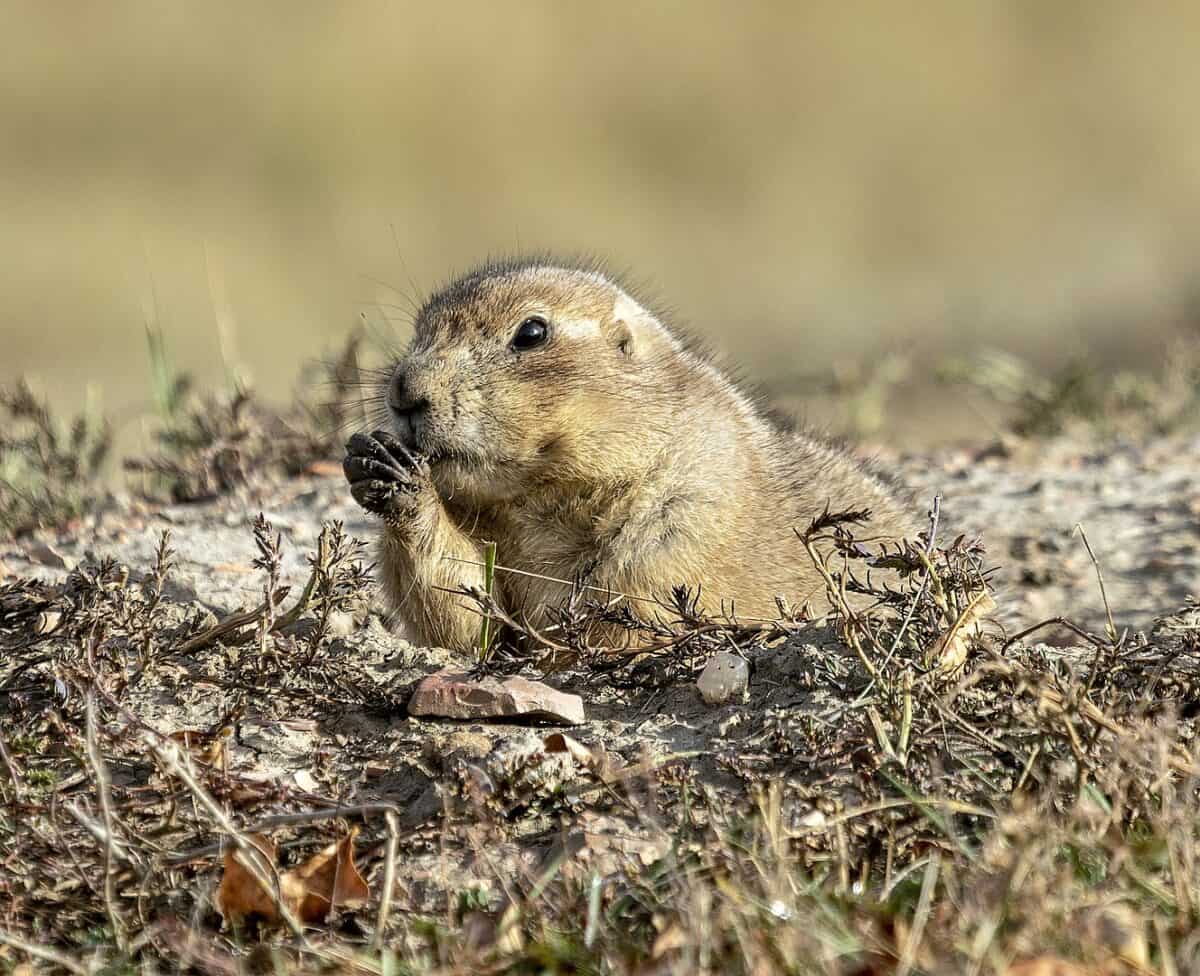In the expansive grasslands of North America, a remarkable social drama unfolds beneath our feet. Prairie dogs, those chubby, barking rodents that pop in and out of burrow entrances, have developed what scientists consider one of the most sophisticated social systems in the animal kingdom. Their elaborate underground cities, nuanced communication, and hierarchical societies rival even some primate groups in complexity. These seemingly simple creatures maintain intricate relationships, recognize individuals, engage in collective defense, and even have what appears to be regional dialects. This article explores the fascinating world of prairie dog social networks, revealing how these unassuming creatures have evolved communication systems and social structures that have stunned researchers and challenged our understanding of animal cognition.
The Prairie Dog Family System: Beyond Simple Colonies

Prairie dog social organization begins with the family unit, known as a coterie. Each coterie typically consists of one adult male, several females (usually one to four), and their offspring. This family-based structure serves as the fundamental building block of their larger society. Unlike many rodent species that have loose associations, prairie dogs maintain strong family bonds, with clear recognition of family members versus outsiders. The coterie defends a specific territory within the larger colony, with boundaries that are well-established and vigorously maintained. What makes this system particularly complex is that prairie dogs recognize not just their immediate family members but extended relations across multiple coteries, creating a layered social network where individuals interact differently with close kin, distant relatives, and non-relatives.
The Language of Prairie Dogs: More Than Simple Calls

Perhaps the most stunning aspect of prairie dog society is their sophisticated communication system. Dr. Con Slobodchikoff, a biologist who has studied prairie dog language for over 30 years, discovered that these animals possess one of the most complex vocal communication systems ever documented in non-human animals. Prairie dogs use distinct alarm calls that specify not just the presence of a predator, but identify its type, size, color, and even speed of approach. For example, a prairie dog can vocalize whether an approaching human is wearing blue or yellow clothing, or whether a hawk is flying directly overhead or circling at a distance. These vocalizations have consistent acoustic patterns that other prairie dogs understand and respond to appropriately, suggesting a form of language with specific semantic content rather than simple warning calls. This level of descriptive communication is rarely found outside human language and represents a remarkable evolutionary development.
Kiss-and-Cousin Greetings: Social Recognition Behaviors

Prairie dogs employ a unique greeting ritual often described as the “kiss-and-cousin” behavior. When two prairie dogs meet, they touch their front teeth together in what appears to be a kiss. This isn’t merely an affectionate gesture but serves an important social function. Through this contact, prairie dogs can recognize family members, determine if a female is receptive to mating, and establish social status. The greeting ritual varies in intensity and duration depending on the relationship between the individuals. Close family members generally engage in longer greetings, while interactions with neighboring coterie members are briefer. This nuanced greeting system allows prairie dogs to maintain their complex social network by constantly refreshing their understanding of who’s who in their community. Researchers have documented that prairie dogs can remember and recognize dozens of individual colony members, distinguishing them by scent, appearance, and vocalization patterns.
The Town Structure: Multi-level Social Organization

Prairie dog colonies, often called “towns,” represent an impressive example of multi-level social organization. These towns can span hundreds of acres and house thousands of individuals. What’s remarkable is the hierarchical structure within these communities. Beyond the family unit (coterie), prairie dogs organize into wards (groups of coteries) and then into the larger colony or town. Each level has specific social dynamics and territorial boundaries. Studies have shown that prairie dogs recognize colony members from different wards, adjusting their behavior accordingly. They’re more tolerant of individuals from nearby coteries within their ward than those from distant sections of the colony. This suggests a sophisticated understanding of social geography and community structure. Some prairie dog towns have existed continuously for centuries, with social knowledge and territorial boundaries passed down through generations, creating a form of cultural transmission rarely seen in rodents.
Predator Defense Networks: Coordinated Surveillance

Prairie dog colonies function as sophisticated security networks, with individuals serving as sentinels and communicating detailed information about threats. When a predator approaches, sentinel prairie dogs don’t simply sound a generic alarm but transmit specific information about the threat. The entire colony responds accordingly – retreating underground for aerial predators, standing tall to monitor ground predators, or even forming defensive groups to mob smaller threats. What’s particularly impressive is how this information spreads through the colony. Prairie dogs will relay alarm calls even if they haven’t personally spotted the danger, creating an information cascade that can travel across an entire town in minutes. This coordinated defense system represents a form of collective intelligence, where the group’s awareness and response capabilities exceed that of any individual. Research has shown that prairie dogs take turns serving as sentinels, suggesting a form of cooperative behavior that benefits the entire community.
Regional Dialects and Cultural Variations

One of the most fascinating discoveries about prairie dog communication is the existence of regional dialects. Different colonies of the same prairie dog species develop distinct vocalization patterns that function like linguistic dialects. Prairie dogs from separate geographic regions may use slightly different sounds to communicate the same information. When prairie dogs from different colonies are introduced, they may initially have difficulty understanding each other’s alarm calls, though they can learn these new “dialects” over time. This variation suggests a form of cultural transmission, where young prairie dogs learn the specific communication patterns of their natal colony. The existence of dialects also indicates that prairie dog communication isn’t entirely instinctual but has a learned component – a characteristic typically associated with more cognitively advanced species. These regional variations have been documented across the range of all five prairie dog species, with neighboring colonies showing more similar dialects than distant ones.
Social Learning and Knowledge Transfer

Prairie dogs exhibit impressive capabilities for social learning, with knowledge passed between individuals and generations. Young prairie dogs learn essential survival skills by observing adults – from foraging techniques to predator recognition and response. Particularly noteworthy is how young prairie dogs acquire their complex vocal communication system. Juveniles go through a period similar to human language acquisition, where they practice and refine their calls under the guidance of adults. They learn not just the basic alarm calls but the subtle variations that convey specific information about predators. Studies have shown that prairie dogs can even develop appropriate alarm calls for new threats they’ve never encountered before, suggesting a level of conceptual thinking rather than mere mimicry. This sophisticated social learning system enables the maintenance and evolution of their complex society across generations, creating a form of cultural continuity rarely observed in rodents.
Conflict Resolution and Social Politics

Prairie dog society isn’t always harmonious – conflicts arise over territory, mates, and resources. However, what distinguishes prairie dogs is their sophisticated approach to conflict resolution. Rather than relying solely on physical confrontation, they engage in complex social negotiations. When territorial disputes occur between neighboring coteries, prairie dogs often resolve them through displays and vocalizations rather than actual fighting. These disputes typically follow predictable patterns that minimize physical harm while establishing clear boundaries. Prairie dog society also includes dominance hierarchies within coteries, particularly among females. These hierarchies reduce conflict by establishing clear expectations about access to resources. Researchers have documented instances of coalition formation, where prairie dogs will support relatives during disputes, demonstrating an understanding of alliance politics. These sophisticated social dynamics suggest prairie dogs possess a level of social intelligence that allows them to navigate complex relationships and maintain relatively stable societies despite competing interests.
Mating Networks and Reproductive Strategies

Prairie dog reproduction involves complex social dynamics that go beyond simple breeding pairs. While coteries typically have one breeding male who fathers most offspring with his female harem, the system isn’t entirely closed. Research has documented “extraterritorial” mating, where females will sometimes mate with males from neighboring coteries. These excursions typically occur during specific times of the breeding season and appear to be strategic rather than random. They may serve to increase genetic diversity or represent female choice for higher-quality males. Males engage in sophisticated competition and courtship behaviors, including vocal displays and physical competitions that establish breeding hierarchies. Female prairie dogs also exhibit selective behavior, sometimes actively rejecting certain males while accepting others. The complexity extends to parental care, where related females within a coterie may assist in raising young, creating a cooperative breeding system. This interconnected mating network creates genetic links between coteries that strengthen the larger colony’s social fabric.
Seasonal Changes in Social Dynamics

Prairie dog social networks aren’t static but change with the seasons, creating a dynamic social landscape. During the breeding season (typically late winter to early spring), territorial behavior intensifies, and males become more aggressive in defending their coterie boundaries. Social interactions between coteries decrease, and the emphasis shifts to reproduction and mate guarding. As spring progresses into summer, the social restrictions relax somewhat, allowing more interaction between neighboring groups, particularly among juveniles who may engage in play across coterie boundaries. By late summer and fall, prairie dogs focus on foraging and fattening for winter, leading to more tolerance around feeding areas. Winter brings another shift as prairie dogs spend more time underground, where social contact is largely limited to immediate coterie members. These seasonal patterns create a pulsing social network that expands and contracts throughout the year, requiring prairie dogs to constantly adjust their social behaviors and relationships according to environmental conditions and biological imperatives.
The Cognitive Demands of Prairie Dog Society

Maintaining such complex social networks requires significant cognitive capabilities, and research suggests prairie dogs possess impressive mental faculties. They demonstrate excellent spatial memory, remembering the locations of hundreds of burrow entrances, food caches, and territorial boundaries. Their social memory allows them to recognize dozens of individual colony members and adjust behavior based on past interactions. Prairie dogs also show evidence of perspective taking – anticipating how others might respond to their actions and adjusting accordingly. The sophisticated communication system requires both cognitive flexibility and processing capability to produce and interpret nuanced vocalizations. These cognitive demands may explain why prairie dogs have relatively large brains for their body size compared to less social rodents. Some researchers theorize that prairie dog social complexity may have driven their cognitive evolution, similar to how primate intelligence is thought to have evolved partly in response to social challenges. This supports the “social intelligence hypothesis,” which suggests that navigating complex social environments is a significant driver of brain evolution across species.
Conservation Implications of Social Complexity

The remarkable social complexity of prairie dogs has profound implications for their conservation. Traditional conservation approaches often focus on preserving minimum viable populations without considering social structures. However, for prairie dogs, simply maintaining small, fragmented populations may not be sufficient. Their complex social networks require certain population densities and spatial arrangements to function properly. When colonies are fragmented by development or poisoning campaigns, the sophisticated social systems that have evolved over millennia can break down. This social disruption may explain why small, isolated prairie dog colonies often fail to thrive even when habitat conditions seem adequate. Some conservation biologists now advocate for preserving not just prairie dog numbers but their social context – maintaining large, connected colonies that can support their full range of natural behaviors. Understanding prairie dog social complexity has also shifted public perception, helping people appreciate these animals as intelligent, socially sophisticated creatures worthy of conservation rather than viewing them merely as agricultural pests.
Conclusion: Rethinking Animal Social Intelligence

The extraordinary social complexity of prairie dog networks challenges our preconceptions about animal intelligence and social capabilities. Their multi-layered communities, sophisticated communication system, and intricate social dynamics reveal cognitive abilities that were once thought to exist only in primates and a few other mammalian groups. Prairie dogs demonstrate that remarkable social complexity can evolve in seemingly unlikely species, suggesting that social intelligence may be more widespread in the animal kingdom than previously recognized. Their underground societies represent an extraordinary case of convergent evolution – where similar complex traits evolved independently in different evolutionary lineages. For scientists, prairie dogs provide a fascinating window into how social complexity emerges and what cognitive capabilities it requires. For the rest of us, these remarkable rodents offer a humbling reminder that intelligence and social sophistication can be found in unexpected places, often just beneath our feet in the seemingly simple creatures we too easily overlook.
- How Penguins Take Turns at Sea and Nest to Raise Chicks - August 9, 2025
- Dolphin Brains Compare to Those of Apes and Humans - August 9, 2025
- 14 Cutting-Edge Biotech Innovations That Will Shape the Future - August 9, 2025

